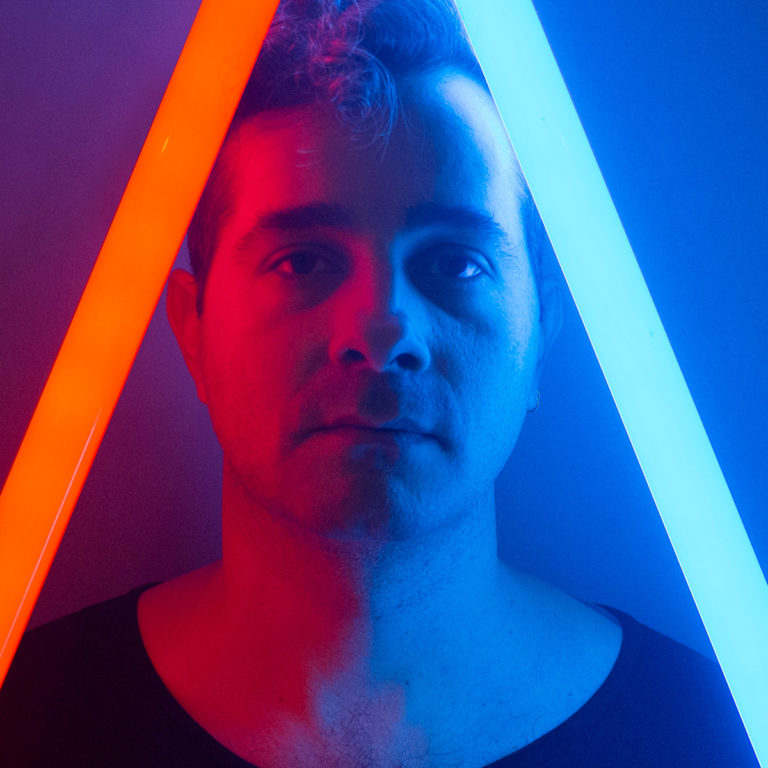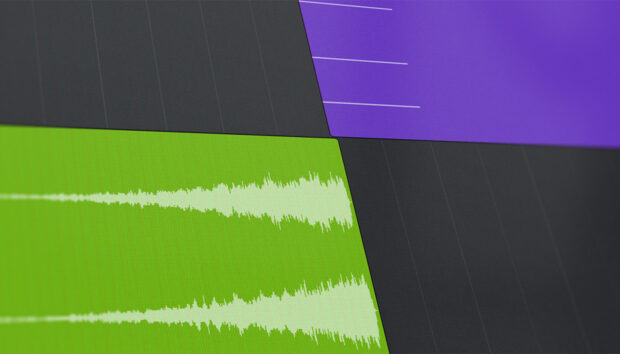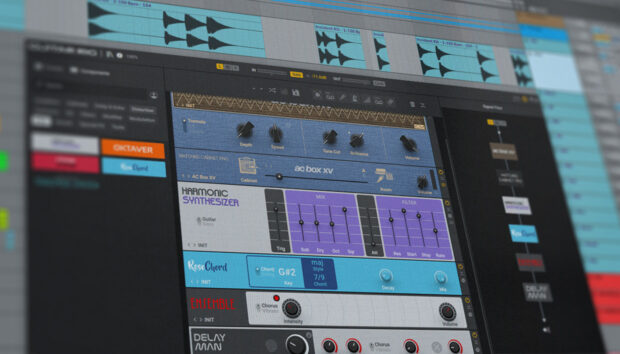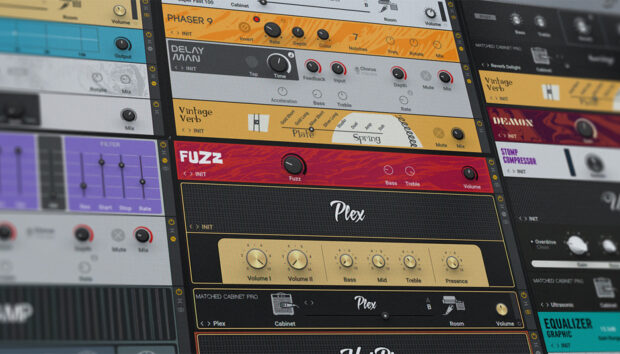Telefon Tel Aviv, until recently, was a fondly remembered electronic duo with a catalogue of critically acclaimed releases spanning from glitchy, ambient IDM to synth pop and industrial. Following the untimely passing of Charles Cooper in 2009, bandmate Josh Eustis wound-up the project and spent the next several years embarking on a series of new collaborations and solo efforts. First reactivating Telefon Tel Aviv for a one-off live show in 2016, Josh went on to tour extensively under the moniker, eventually releasing Dreams Are Not Enough last year – a full decade after previous album Immolate Yourself.
Since the release, a hectic touring schedule has seen Josh criss-crossing Europe and the US for weeks on end. During a recent stop in Berlin, we invited the Ghostly International signee and one-time Nine Inch Nail to stop by and talk about his approach to sound design, show us the go-to tools behind his latest record, and explain why the ‘wrong’ way is often the best way.
You’ve been incredibly busy these past few years – solo projects, collaborative releases, touring both as Telefon Tel Aviv and with various bands… You released Dreams Are Not Enough in September, and you’re touring that right now. How does it not descend into chaos?
Oh, it descends into chaos, believe me. It does. I don’t really know. I’m not really good at anything except for the act of making the music. I’m terrible at anything else in life. You take me out of the studio and I’m completely useless. So I don’t really know how to manage it. I just do stuff. Sometimes, I’ll sit down and work without even any clear idea and it might get put in this folder, that folder or whatever. As I catalogue ideas, I’ll go, “Oh, this is a Second Woman thing,” or, “Oh, this is a Telefon thing. This is too weepy for Second Woman.”
Then the label, Ghostly, came to me and said, “Hey, dude, are you going to actually do this record or are you just going to fuck around forever? It would be really cool if you did it, especially if you did it now so you’d have time to tour on it next year.”
“Oh, yes, okay.” “Alright, that means we need it by March. Mid-March, you’ve got to get this thing done.” Then, I had a fire in front of my ass. I’d never been given a deadline for a record, and I made it this time. I handed it in a week early.
What state was the record in when you got this deadline?
I had three songs finished as I had been working on this Max patch, cataloguing ideas, saving sound-design patches and stuff like that. Then, I just sat down and went back through all of my catalogued ideas and realised how bad they were, and then started mostly about 95% from scratch at the beginning of this year. I think I was done at the end of March.
How do you know when a record’s done?
You’re done when you give up on it. It could never be finished. I still hear things on the record now where I’m like, “Oh, I wish I hadn’t done that,” or, “I would change that now.” There’s a Driver plugin on a kick drum there on the record at one point and it’s bothering me so much that I don’t bypass the Driver at this point. That’s a plugin that I love.
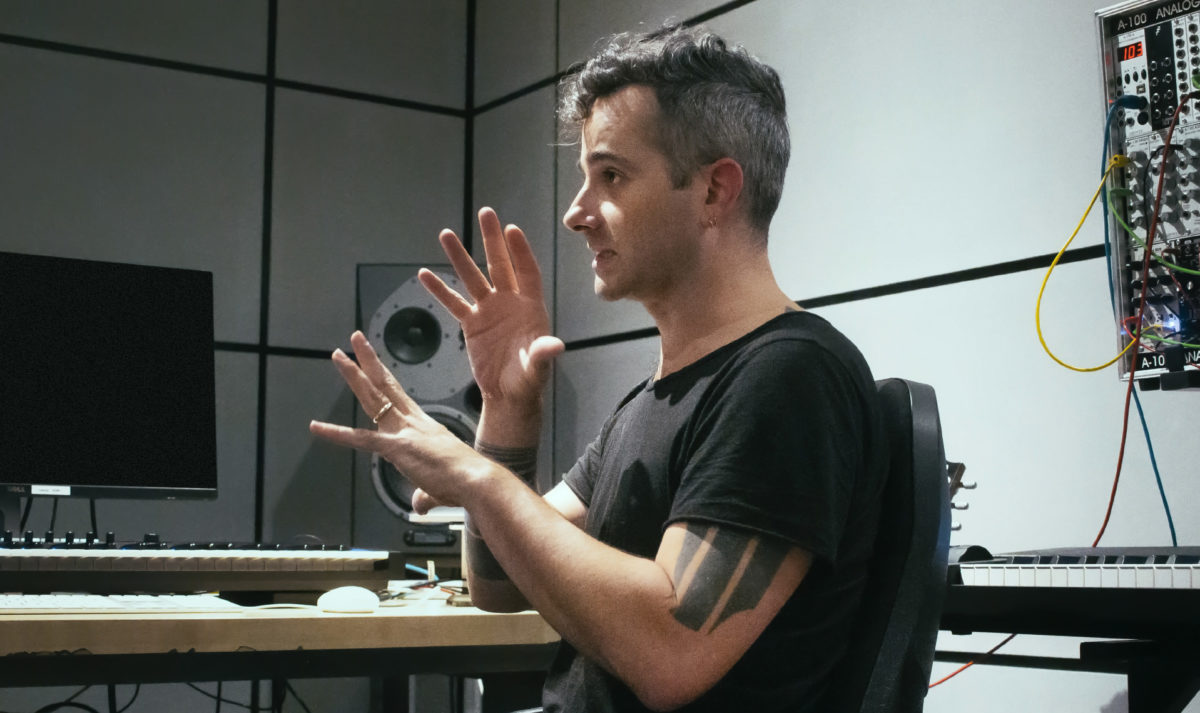
Driver doesn’t really do subtle.
No, it doesn’t, or it’s hard to get subtle. You’ve really got to hold the reins on it. There’s one point where I really wish I had bypassed it, but I didn’t, so it’s still a little messy at this one point. There’s stuff like that all the time where I change it for the live show. I’ve fixed it. For the live show, I go back and correct all those problems.
The distortion in particular is something that really stands out on this record. Was there a specific approach to it?
Yes, it’s not actually distortion. It’s almost a kind of clipping. There are two things that I like to do. Move the DC offset all the way north and things just crater. Then, another thing that happens several times on the record is distortion with theta waves. You just have a sine wave between 4Hz and 7Hz and just push it into the limiter. It’ll just chew everything to pieces. This kind of stuff.
On “Not Seeing,” it seems like the kick drum is triggering the disintegration of the tracks around it. Is that the technique you used there?
In the front part, right? The kick drum is tuned to a theta frequency. It’s just tuned so low that it’s below audio rate. You just hear the beats. It’s a little too loud, and I’ve got a soft-clip thing on the two-mix for the front part of that song to get these inter-sample peaks happening. When that kick drum hits, it breaks the mix.
It’s not so much a kick drum as the absence of everything else, which is one of the themes of the record. It’s not so much about the thing that it is, it’s about what’s not there.
Sure. Compared to previous Telefon Tel Aviv stuff, this record sticks a lot closer to the ‘three things-at-once’ approach.
Yes, a friend of mine, Greg Puciato, told me that and I thought it was a really cool way to think about musical ideas, so I started not really holding myself to it, but keeping in mind that I can trim things down. I like it. I like this idea of self-censorship. I think it’s a lot of fun.
There’s a whole other version of the record with a whole lot of songs which got deleted from the hard drive. Everything got winnowed down to just what it needed to be, hopefully. The track counts are really low on the record. Previously, some Telefon songs would have 60, 70, or 80 tracks, maybe. This one, I think the biggest one has maybe 20 tracks. I kept it really minimal. I started realising that things started sounding bigger the fewer of them that I had.
On every single Telefon Tel Aviv track since 1999, we have used Reaktor. Every single one – all the remixes, everything.
So there’s never been a set recipe for a Telefon Tel Aviv track?
No, and that’s been the big problem for me since the beginning. People would always ask, “What’s your process? How did you make ‘Fahrenheit Fair Enough’?” I was like, “Well, we would sit around and make sound design for a bunch of days. Then, we’d get bored of making sound design. Then, one of us would make a beat and the other one would play bass over it.
But, you could definitely say this: On every single Telefon Tel Aviv track since 1999, we have used Reaktor. Every single one – all the remixes, everything. Reaktor is on every one. Maybe it just generated a kick drum, maybe it did a whole bunch of granular processing…
There’s quite a definite sound-world to this record – a consistent sonic flavor. Was that a conscious choice?
It wasn’t necessarily a conscious choice of, “Oh, I want things to sound glassy or metallic,” but I think in giving myself space to self-censor and to discriminate against my own ideas, anything that was sounding really analog in a way was getting put aside, and these other-worldly, glassier sounds started making the cut.
The last record was so analog and so warm, that I went in the other direction. I started to get bored with my analog gear, and I eventually just got rid of it. Now I’m asking myself, “What do software synthesisers excel at?” It’s those types of things.
Which software are you using? I know you’ve gone deep into Max on this album.
Yes. But the sound generation is mostly Form, honestly. A lot of Form and a lot of Maschine. A lot.
I love FORM. I think people don’t always realise how much it can do.
Form was my baby on this record. You, literally, can drop anything into it and it instantly sounds cool.
Was it a ‘drag-and-drop, trial-and-error’ sort of situation?
Not that much trial and error – a little bit of that. Basically, I would take old TTA sound design and drop it in. It’s all named. Every sound is named, tagged, and categorized. So I would just grab longer pieces, drop them into Form, and then see what it did. I came up with some things that sounded cool to me, accidentally, without really knowing what I’m doing or what it’s doing.
Can you tell us about any specific sounds that were done with Form?
Oh, the first track [“I dream of it often”]. It’s all Form. In track two [“a younger version of myself”], it’s LazerBass and FORM.
We love LazerBass here too. Especially because it’s free.
LazerBass is the wildest shit I’ve ever heard. It’s so crazy. That’s what I made the beat on for track two. That, and then distorted a little. I programmed what I thought was going to be a bassline, then started putting a little chain together. I had a LazerBass thing, and then I had some MIDI notes playing it. Then, I spit out a whole line of it and moved the loop points in Live and got to this point where I was like, “Oh, that’s cool. It’s like a shuffle thing. Alright, that’s it.”
And the rest of the track flowed from that?
Yes, then I had this patch in Form that I’d been working on that I liked. Actually, I think that was a preset where I dropped my own thing in, then changed some stuff and took it somewhere else. It’s like a piano in a way but not a piano. There’s that, and then there’s just the pad that comes in halfway. There’s really not that much in that song.
And this is all running off your custom Max patches?
Yes. I mean, basically, the general framework for this record is very simple. Live is open. A whole bunch of Native Instruments tone generations are open. Then Max is just sending clouds of MIDI to it. Then I sing over it. It’s extremely primitive.
Generally, there’s one thing in the song that’s the main thing, and that’s usually Form. With a couple of exceptions, but it’s usually Form. Then Max is doing this sort of time-compression/expansion thing with the MIDI notes.
I understand you’re also using MASCHINE?
Yes. I end up using that a lot because I find the percussion sound design gets done really quickly. Also, you can go from one thing totally to the other end of the spectrum in a matter of seconds. I open up a bunch of stuff in it and get a bunch of different sounds happening, and then use LFOs to modulate them so they’re never exactly the same. Then, just send tons of MIDI to it from Max.
What’s your process for designing percussion?
The kick drum ensemble is amazing. I use it all the time. All the time. It’s one of the most used things I have in my toolkit. I use that a lot. I like making hi-hats and stuff like that. I don’t really have a set process. I just mess around with it until I have something cool.
Do you allocate time specifically for designing sounds?
Yes. I think I wrote a tip about this. It’s a conscious effort to honour your ideas with effort. If it fails, that’s fine, but the effort is important. That effort means that I need to allow myself space to just wander off into a sound-design world.
So you’re a ‘different hat, different day’ kind of person?
Yes. But when it comes to Telefon Tel Aviv, not for any record at any point was there ever a mix process. There wasn’t ever like, “Okay, time to mix the record.” We get to the end of the song and it’s done. I mix as I go. Of course, when I’m working with other people, it’s totally different, but with Telefon, I’m constantly making little EQ moves. All of that stuff is one process to me.
The mix process is absolutely part of the composition process. Where you play something in the stereo field, how loud it is, how much top end it has, whether it’s intentionally out of phase or in phase… All of the decisions to me are compositional decisions. I don’t really see them as mix decisions.
Right.
Maybe I’m not being totally accurate about this, but there are two ways of thinking about mixing or music production in general. There’s ‘make it as good as you can to present the idea’, and then there’s the way that I do it, which is, sometimes, I make it wrong because it’s more compositionally appropriate for the music.
I mean, it’s funny. The other people that deal with audio a lot are like, “Oh well, this is wrong and that’s out of phase. That’s one distorted.” It’s like, “Yes, it, literally, sounds exactly the way I want it to sound,” so that’s a compositional decision.
If it sounds good, it is good?
Yes, I mean Selected Ambient Works Volume I by Aphex Twin was mastered off a cassette tape. It sounds like dog shit, but it’s perfect. I wouldn’t change anything about it. That’s part of the charm and part of the beauty of it.
There are points on this record where things go completely out of phase… My mastering engineer was like, “Oh, what are you doing, man? You’re killing me.”
But in the end, it sounds great.
I don’t know if it sounds great. But it does sound the way I want it to sound.
Photo credits: Larissa Matheus
Listen to Dreams Are Not Enough below.
Before you go…
Take a deeper dive into FORM with this video from Deru – grab the demo here and follow along. And if you don’t have LazerBass yet, what are you waiting for? The full version is free as part of KOMPLETE START.
Finally, make sure you’re following Josh on Twitter. Come for the political commentary and memes, stay for the no-nonsense production tips you’ll wish someone told you sooner.








